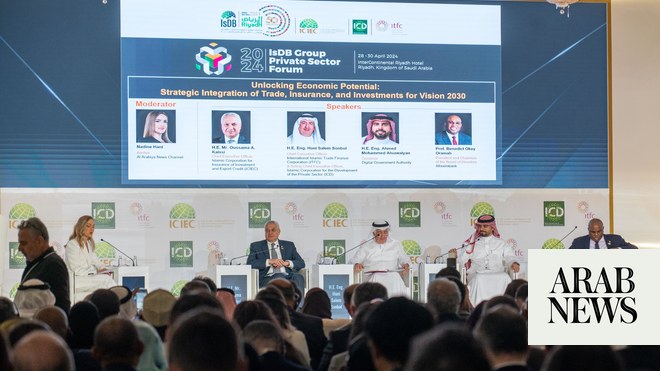
As we approach the seventh anniversary of the launch of Saudi Arabia’s ambitious Vision 2030, it is critical to analyze its core foundations and the possible outcomes, achievements and transformational positive impact it could have in the Middle East. Then we should consider why the West should support the Kingdom’s vision for a more prosperous region.
Vision 2030 is one of the most ambitious and comprehensive plans introduced in the modern Middle East because it encompasses not only economic, but also environmental, social and religious landscapes, along with political reforms. As Saudi Crown Prince Mohammed bin Salman pointed out in his 2016 foreword, the Kingdom’s vision is a “strong, thriving, and stable Saudi Arabia that provides opportunity for all. Our Vision is a tolerant country with Islam as its constitution and moderation as its method. We will welcome qualified individuals from all over the world and will respect those who have come to join our journey and our success.
“We intend to provide better opportunities for partnerships with the private sector through the three pillars: Our position as the heart of the Arab and Islamic worlds, our leading investment capabilities, and our strategic geographical position. We will improve the business environment, so that our economy grows and flourishes, driving healthier employment opportunities for citizens and long-term prosperity for all. This promise is built on cooperation and on mutual responsibility.”
The Kingdom has taken several steps in its implementation of Vision 2030 that have already proven to be successful. For example, due to the impact of its economic reforms — including enhancing the business environment, attracting foreign investment, privatization, creating private sector jobs, and increasing digitalization — a report by the International Monetary Fund stated last year that Saudi Arabia is likely to be “one of the world’s fastest-growing economies this year … Gross domestic product is expected to expand by 7.6 percent, the fastest growth in almost a decade … Despite higher prices for imported commodities, inflation will remain contained at 2.8 percent in 2022 as the central bank tightens policy in line with the US Federal Reserve. Public finances and the external position will strengthen substantially thanks to increased non-oil revenue and higher proceeds from oil exports. Reserve buffers will remain ample.”
It is one of the most ambitious and comprehensive plans introduced in the modern Middle East.
Dr. Majid Rafizadeh
Since the kickoff of Vision 2030 in 2016, some of the other goals that address the economy, housing and infrastructure sectors saw non-oil government revenues increase by approximately “122 percent in the past five years, from $44 billion in 2015 to $107 billion in 2021 … Saudi Arabia has ranked second place in digital competitiveness of G20 … Saudi Arabia ranked ninth place globally in (the) 2021 UNDP technical and vocational training index … the percentage of Saudis who own a home increased from 47 percent to 60 percent between 2016 and 2020 … The Kingdom has invested heavily in the construction and maintenance of road infrastructure. The number of road accident deaths in Saudi Arabia has decreased by 55 percent in five years … The launch of the Haramain high-speed train, which connects Jeddah airport and Makkah and Madinah, has greatly improved the experience of pilgrims traveling through Saudi Arabia.”
While some countries maintain a closed economy with an iron fist in order to monopolize wealth, the Kingdom has been pursuing initiatives to diversify and privatize the Saudi economy in order to benefit more people. This will reverberate across the region. The IMF has endorsed the Kingdom for planning a $500 billion business and industrial zone that extends into Jordan and Egypt. This project has a lot of potential when it comes to attracting foreign visitors and creating more social and cultural dialogue between the West and the Middle East.
In other sectors linked to society, the healthcare system, women and the environment, the accomplishments achieved so far include Saudi Arabia’s healthcare system benefiting “from substantive investment and increased digitization … 90-plus percent of patients received emergency or urgent care within four hours of arrival… Saudi Arabia scored 80/100 in the 2022 World Bank Women, Business and Law Report, up 10 points from 2020 … Saudi female labor participation increased from 19.4 percent to 35.6 percent between 2016 and 2021 … Saudi Arabia has organized over 3,800 entertainment events attended by 80-plus million people … Seven Royal Nature Reserves were established to conserve native plants and animal species in the Kingdom … Launched in 2020, the SEHA virtual hospital is the largest in the world, utilizing the latest technologies to support vital health facilities linked to 130 hospitals and provide three specialized services.”
In a nutshell, Vision 2030 has already produced major advancements in several sectors, including the economy, healthcare, education, housing, employment and infrastructure. Its continuing success will have a positive impact not only for Saudi Arabia, but also the broader region. That is why the international community ought to fully support this ambitious vision.
Dr. Majid Rafizadeh is a Harvard-educated Iranian-American political scientist. Twitter: @Dr_Rafizadeh







